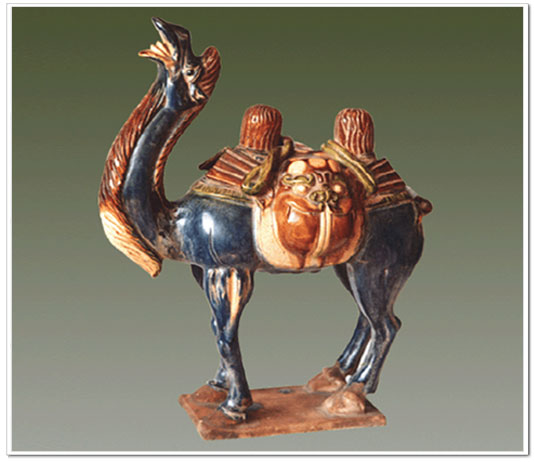Tang Dynasty tri-colored glazed pottery (Tangsancai) is mostly yellow, brown and green in color. The glaze is made by adding metallic oxides to the basic glaze. During the firing process the chemicals in the glaze create a variegated effect. This type of pottery was primarily made in Xian and Luoyang, the capital cities of the Tang Dynasty. Although tri-colored glazed pottery was also produced during the Liao and Jin Dynasties, it was not made in large quantities and its quality was not as good as that of the Tang Dynasty.
 Most tri-colored pottery was made for burial objects. But it was not as durable or as strong as porcelain, which was developed earlier. Most of this pottery, when unearthed, is in poor condition.
Most tri-colored pottery was made for burial objects. But it was not as durable or as strong as porcelain, which was developed earlier. Most of this pottery, when unearthed, is in poor condition.
Tang tri-colored glazed pottery wares were usually round and full in shape in accordance with the aesthetic tastes of the time. The colors are bright and the figures are pleasing. The well-proportioned human and animal figures have smooth lines, natural expressions and life-like poses. The soldier figures are muscular, have big, staring eyes and wield swords or bows and arrows. The female figurines have high-piled hair and their clothing has full sleeves. The animal figures are mainly horses and camels.

